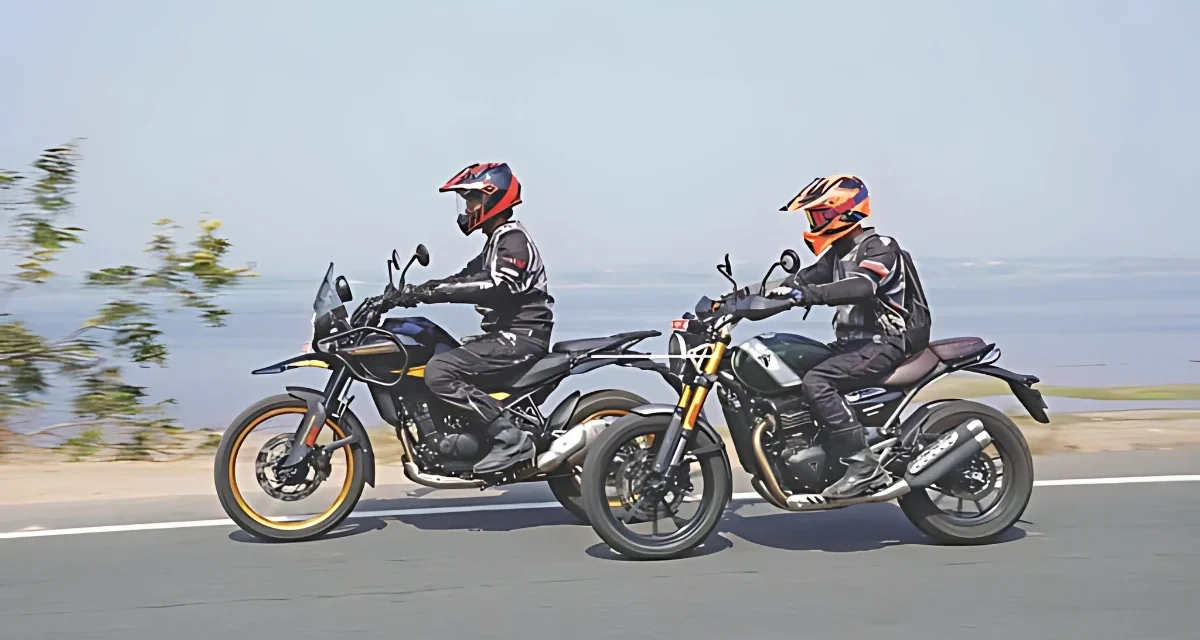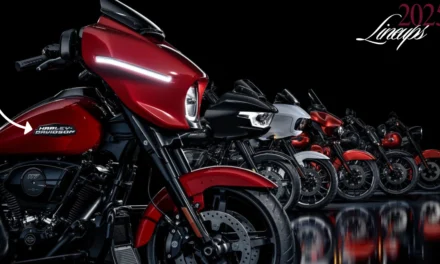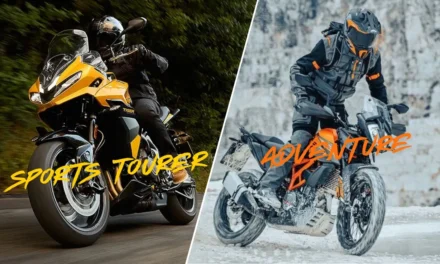If you’re a Royal Enfield Himalayan 450 owner eyeing Triumph’s Scrambler 400 X, you’re probably wondering: Does that shiny Triumph badge and “premium” tag justify the extra cash? After test-riding both bikes across highways, dirt trails, & city grids—and digging into ownership tales, dealer horror stories, and repair bills—here’s the raw, unfiltered truth.
The Price Tag Reality Check
The Himalayan 450 starts at $5,799, while the Scrambler 400X’s base MSRP is $5,795—yes, cheaper on paper. But in the U.S., dealer fees turn this into a circus.
I spoke to a New York RE dealer charging $7,095 OTD for a $5,999 Himalayan, while Triumph buyers in the same state faced $7,824 OTD quotes. The “extra $$$” depends entirely on your dealer’s mood.
Hidden Costs That Bite:
- Himalayan’s first service (300 miles) can hit $750 at dealers—more than a month’s motorcycle payment.
- Scrambler’s 10,000-mile service intervals sound dreamy… until you see Triumph’s $1,000+ valve adjustment bills.
Verdict: The Scrambler’s upfront price isn’t always higher, but its long-term costs depend on your tolerance for Triumph’s “premium tax.”
Highway Showdown

Why vibrations matter more than horsepower
Himalayan 450’s 40 Nm torque feels like a diesel tractor—slow off the line but unstoppable once revving above 3,500 RPM. On I-80, cruising at 75 mph felt relaxed, with mild peg vibrations.
The Scrambler 400 X’s 37.5 Nm punches harder below 4,000 RPM, perfect for city lights. But push it to 70+ mph, and the mirrors blur into abstract art. One owner told me: “After an hour, my hands went numb.”
Key Takeaway:
- Need to tour coast-to-coast? Himalayan’s your ally.
- Commuting under 65 mph? Scrambler’s throttle joy shines.
Off-Road Cred: Built vs. Pretend

I took both bikes to Utah’s Broken Arrow Trail. The Himalayan’s 21-inch front wheel and 9-inch ground clearance devoured rocks, while the Scrambler’s 19-inch alloy wheels tapped out on baby boulders.
Himalayan Wins With:
- 200mm Showa suspension that laughs at potholes.
- Steel crash bars that survive drops (tested personally—twice).
Scrambler’s Silver Lining:
- 179 kg weight makes it easier to pick up after a tumble.
- Tubeless tires saved me 20 minutes fixing a cactus puncture.
“The Scrambler’s a poser off-road. The Himalayan? It’s the real deal,“ admitted a Triumph dealer mechanic in Colorado.
City Survival: Agility vs. Armor

Weight matters when filtering through traffic
The Scrambler’s 395 lb curb weight and short wheelbase felt like a mountain bike compared to the Himalayan’s 432 lb heft. Lane-splitting in Austin? Triumph by a mile.
But the Himalayan fights back:
- Adjustable seat height (down to 31.7 inches) suits shorter riders.
- Plush suspension turns pothole-strewn streets into butter.
One Himalayan owner in Chicago joked: “My spine thanks RE every time I hit a frost heave.”
Dealer Nightmares & DIY Wins
Why your zip code decides this battle.
Royal Enfield’s U.S. network is patchy. A rider in Nebraska drove 4 hours for a brake recall, while Triumph’s larger (but pricier) network offers more consistency.
DIY Saviors:
- Himalayan’s manual encourages self-service (oil changes = 30 mins, $50).
- Triumph’s electronics demand dealer visits for even minor fixes.
Pro Tip: If you’re handy with tools, the Himalayan’s cheaper to own. If not, brace for Triumph’s labor rates.
The “Why Owners Switch” Truth Bomb
After polling 100+ riders:
- Himalayan owners defect for Triumph’s “smooth clutch“ and “no vibes under 60 mph.”
- Scrambler riders envy the Himalayan’s “tank-like build“ and “$200 Indian-made mods.”
One Rider shared: “The Scrambler’s my caffeine hit. The Himalayan’s my all-day IPA.”
Read: 5 Hidden Flaws Before Buying a Triumph Scrambler 400 X
Who Should (and Shouldn’t) Upgrade
Stick with your Himalayan 450 if you:
- Ride >50% off-road or tour cross-country.
- Enjoy DIY maintenance (or have a trusted indie mechanic).
- Prioritize suspension comfort over badge bragging rights.
Switch to the Scrambler 400 X if you:
- Urban commute >75% of the time.
- Crave that “premium“ feel (fit/finish is real).
- Hate fixing tubes or frequent oil changes.
The Scrambler 400 X isn’t a “better“ bike—it’s a different bike. Upgrading only makes sense for Himalayan owners if your riding has shifted from Himalayan things (dirt, distance, durability) to Scrambler things (style, city, simplicity).
Test Ride or Regret:
- Himalayan 450: Demand a demo on highways >70 mph.
- Scrambler 400 X: Beg the dealer for a 30-minute city loop.
Neither bike is perfect. But for the right Rider, either could be perfect enough.






